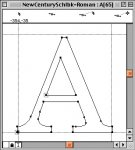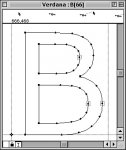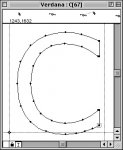Tech
Well-known member
I know this question probably belongs to Kodak section, but in general, when a printer informs you, their RIP (in our case Kodak Creo running on latest Adobe Print Engine 2.0) hangs/crashes on processing a single page that has spot-colored text with drop shadows on top of duotone image background...
Do you conclude:
a) they are not telling you the full truth of what the real problem is
b) they don't know what the solutions are
c) they want to milk you for mula
d) mistakes happen and they just want you feedback to help solve what they don't understand...like perhaps have designers change their layout to help solve their downstream output...even though layout files looks perfectly legit
Help me understand a few things please...
a) do RIP output live text into vector? I'm always under the impression that RIPs output in color separation based on resolution/LPI?... Regardless how complex or poorly design font family is, it should never be the problem that stops a RIP? Yeah, in our case, printer claims this postscript font we used has too many vector points for their RIP to process??? This is the first time I heard of such problem...
Thanks in advance to help educate me.
Do you conclude:
a) they are not telling you the full truth of what the real problem is
b) they don't know what the solutions are
c) they want to milk you for mula
d) mistakes happen and they just want you feedback to help solve what they don't understand...like perhaps have designers change their layout to help solve their downstream output...even though layout files looks perfectly legit
Help me understand a few things please...
a) do RIP output live text into vector? I'm always under the impression that RIPs output in color separation based on resolution/LPI?... Regardless how complex or poorly design font family is, it should never be the problem that stops a RIP? Yeah, in our case, printer claims this postscript font we used has too many vector points for their RIP to process??? This is the first time I heard of such problem...
Thanks in advance to help educate me.



















